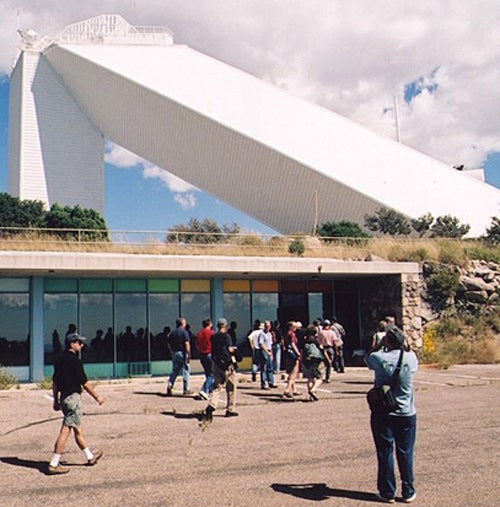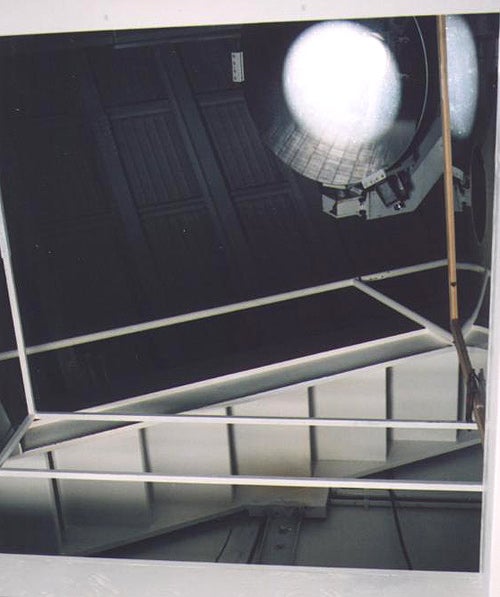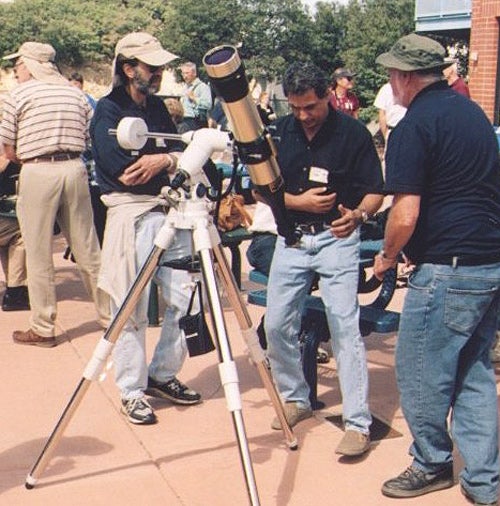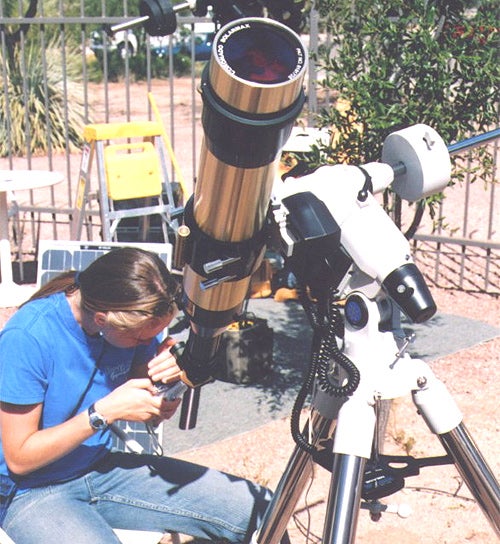The fifth annual Hands on the Sun (HOTS) Conference took place in Tucson, Arizona, October 6–9. Coronado Instruments hosted the conference, which 70 enthusiastic observers attended. For those interested in solar observing, teaching astronomy, or working in an outreach capacity, the conference offered a way to try out a variety of solar telescopes and accessories.
The last few years has seen a revolution in solar observing. New instruments have brought safe access to the Sun’s exciting and continually changing features. Amateur astronomers are no longer limited to observing our star in white light (either using eyepiece projection or solar filters), where sunspots are the most prominent feature.
Solar monochromators (built from many quartz plates stacked between crossed polarizers) offered the first views of the Sun in narrow bandwidths such as Hydrogen-alpha (Hα), but these instruments were expensive and accessible to few. Later, several vendors offered interference filters, which lowered the cost of Hα solar observing to several thousand dollars.
A half dozen years ago, David Lunt, founder of Coronado Instruments, invented and patented a method of making high-precision Fabry-Perot etalons — the key component in safe, effective, and affordable solar telescopes. Lunt designed and built precision optical instruments for industry and the military before he turned his efforts to the development of solar telescopes. Coronado’s first offerings were etalons integrated with specially designed optical systems, which made convenient and complete solar-observing instruments possible.
Today, Coronado offers a SolarMax etalon and an infrared-blocking filter for use on existing telescopes. Two years ago, Coronado introduced the Personal Solar Telescope (PST), a Hα instrument with a 40mm aperture for less than $500. Coronado introduced a new product this year, a solar telescope filtered for the Calcium K (Ca-K) line. This highlights the blue end of the spectrum, so observers see different details in the Sun’s chromosphere.
This year’s conference was chock-full of speakers, observing, imaging, and even a field trip.
On Thursday, Steele Hill from NASA’s Goddard Space Flight Center spoke about the Solar and Heliospheric Observatory (SOHO), a space telescope that has been observing the Sun for almost 10 years. He distributed CDs with SOHO images, including coronal mass ejections, to all participants.
I arrived early Saturday and had the opportunity to observe for half an hour with a 90mm SolarMax Hα scope before the day’s heat degraded the seeing. This offered some of the most spectacular views of the Sun I have ever experienced, including nice prominences and filaments at this time of low sunspot activity.
Saturday morning’s first speaker was Richard Hill from the University of Arizona’s Lunar and Planetary Laboratory, and founder of the Association of Lunar and Planetary Observers’ (ALPO) Solar Section. Hill’s talk, “What am I Looking at,” described the Sun’s observable features — the photosphere, such as sunspots and their structure and granulation, which we see in white light. Numerous illustrations provided insight into chromospheric features, including prominences and their projection on the Sun’s disk as filaments, as well as plages and flares, which can be viewed through a Hα scope. In the new Calcium K-line telescopes, these features appear quite different because the features originate at a different altitude in the solar chromosphere.
Informal workshops and observing sessions continued throughout the day. Paul Mortfield, the SOHO/MDI Education and Outreach director at the Stanford University Solar Center, described scientifically valuable observations that amateurs can do, such as monitoring solar activity. Amateur astronomers Tony Philips, John Adair, Hiram Villarreal, and Tom Masterson also held hands-on workshops on solar imaging and image processing.
Coronado had solar telescopes, including 40mm Personal Solar Telescopes (PST) and 40-, 60- and 90mm SolarMax instruments set up throughout the conference for attendees to observe and image the Sun. Those who brought a digital camera experienced the excitement of solar imaging. Others got good results with low-end point-and-shoot cameras held at the eyepiece doing afocal (where the lens is focused on infinity) photography.
Some did solar photography with inexpensive “electronic eyepieces,” such as Meade’s Lunar and Planetary Imager (LPI) or webcams. One observer showed off a camera adaptor made from a few cents worth of PVC tubing and bit of tape.
Acclaimed Sun-imager Gary Palmer gave the closing presentation that day. He outlined his techniques and presented many new photos, including some Ca-K images. Palmer closed his program with a tribute to David Lunt, who passed away in January.
Saturday evening, Gerry Hogan, Lunt’s wife, hosted a reception. This was a great time to relax and get to know other participants. A nearby wedding provided an unexpected fireworks show, which complemented the dinner and evening festivities.
Sunday opened with a program on observing tips and techniques presented by amateur astronomer Paul Hyndman. The evening brought hands-on visual and imaging workshops, and we attended a dark-sky observing program south of Tucson sponsored by Meade Instruments and presented by comet-hunter David Levy.
Although amateur astronomers have been making solar observations for a number of years, it has never before been as accessible, nor as affordable, as it is now. For those looking to get into the field or teachers searching for classroom projects, this conference is on-point. Next year’s conference will be held in Tucson October 6–8. Watch the Coronado web site for details.














